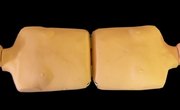Using the trial and error method of testing is sometimes the only way to find the answer to a question. However, the process also has many drawbacks that make it an unwise choice in certain situations. Trial and error is a research method you should only use as a final resort.
Limited Test Opportunities
Trial and error works best in situations where you have more test subjects than you need to run each test. When you have a limited number of test subjects that you cannot reuse after each test, you have to be highly selective of the tests you run. For example, if you have seven patients with the same sickness and you have 11 different tests you can run, but one test only for each patient, you need to select the seven tests you think are most helpful. This means you need to scrap at least four viable tests.
Time Consumption
In some instances during the trial and error method, it is impossible to run several experiments all at once. This means you have to work through several different tests until you find the one that works best. When you finally come to the correct conclusion, it can be disheartening to think about the time you wasted coming to the correct conclusion. For example, you may find it irritating that you did not simply perform the correct test first to get the answer you desired.
Wasted Materials
Trial and error wastes a large quantity of test materials if you run prolonged tests. In some cases, you may be unable to reuse old test subjects or catalysts, so you have to dispose of the materials. For example, if you run several tests to find a liquid that won't melt a sugar cube, you must dispose of the liquid and melted sugar cube after each test until you find the liquid that yields the results you desire.
Dangerous Tests
Blind testing to receive a test result can be risky to yourself and any test subjects involved. For example, it is common to see medical professionals using the trial and error method on their patients during clinical testing. Some of the experiments pay off and result in a groundbreaking medical product that can help many people. Unfortunately, there also is the chance that the drug could harm the subjects and even result in death.
Related Articles
References
Writer Bio
Shae Hazelton is a professional writer whose articles are published on various websites. Her topics of expertise include art history, auto repair, computer science, journalism, home economics, woodworking, financial management, medical pathology and creative crafts. Hazelton is working on her own novel and comic strip while she works as a part-time writer and full time Medical Coding student.











